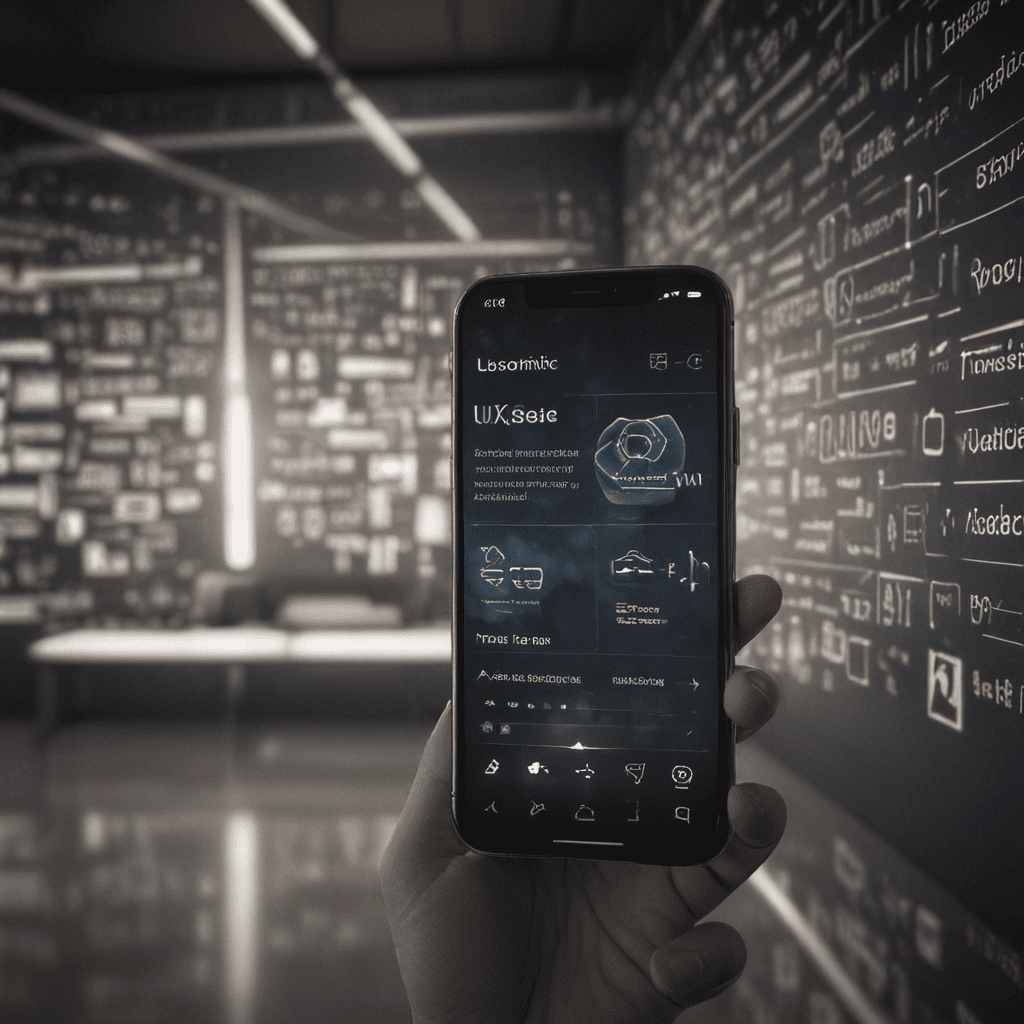
Exploring the Concept of User-Centric Design Principles in User-Centered UX
1. Introduction
User-centric design has emerged as a cornerstone of modern UX (user experience) practices, prioritizing the needs, preferences, and behaviors of end-users in every aspect of the design process. By adopting a user-centric approach, designers can create intuitive, engaging, and satisfying experiences that cater to the specific requirements and pain points of target user groups. This article delves into the concept of user-centric design principles and their profound impact on user-centered UX.
2. Defining User-Centric Design Principles
At its core, user-centric design is a philosophical approach that emphasizes the paramount importance of the user throughout the design and development process. It entails designing with the user in mind, considering their mental models, usage patterns, and overall experience. The key principles guiding user-centric design include:
- Empathy: Understanding and relating to the needs, goals, and frustrations of users fosters a deep comprehension of their experiences.
- Inclusion: Designing for a diverse range of users, considering cultural, physical, and cognitive differences, ensures accessible and inclusive UX.
- Usability: Prioritizing ease of use and intuitive navigation allows users to seamlessly interact with the product or service.
- Aesthetics: Balancing form and function, user-centric design creates visually appealing and aesthetically pleasing experiences that enhance engagement.
- Feedback: Regularly gathering user feedback through surveys, interviews, and testing helps designers refine and improve the user experience.
3. The Role of Empathy in User-Centric Design
Empathy plays a pivotal role in user-centric design, enabling designers to step into the shoes of users and truly understand their perspectives. By developing empathy, designers can:
- Identify pain points: Spotlighting the challenges and frustrations faced by users helps designers prioritize critical areas for improvement.
- Uncover hidden needs: Understanding the underlying motivations and desires of users reveals opportunities to design solutions that resonate with their unmet needs.
- Design with purpose: Empathy-driven designs are inherently meaningful and valuable, addressing real-life user problems and enhancing their overall experience.
4. Key Components of User-Centric UX
User-centric UX encompasses various essential components that work in harmony to deliver exceptional experiences:
- User research: Thoroughly researching user needs, preferences, and behaviors through surveys, interviews, and observations provides a solid foundation for design decisions.
- User interface (UI): Designing intuitive, visually appealing, and easy-to-use interfaces that cater to the mental models and navigation patterns of users.
- User interaction (UI): Crafting interactions that feel natural, responsive, and enjoyable, enhancing the overall usability and engagement of the product or service.
- Content strategy: Creating compelling and relevant content that aligns with user needs, context, and preferred content formats.
5. Methods for Gathering User Feedback
Regularly collecting user feedback is crucial for continuous refinement and improvement of UX. Some common methods include:
- Surveys: Gathering quantitative data on user satisfaction, pain points, and preferences through structured questionnaires.
- Interviews: Conducting qualitative research through one-on-one conversations to gain in-depth insights into user experiences.
- User testing: Observing users interacting with prototypes or live products to identify usability issues and areas for improvement.
- Analytics: Tracking user behavior and interactions through analytics tools to gain insights into usage patterns and user preferences.
6. User Profiling and Persona Development
Creating user profiles and personas is a valuable technique in user-centric design. User profiles are detailed descriptions of representative users, capturing their demographics, goals, behaviors, and motivations. Personas take this a step further, adding a layer of storytelling and narrative to bring these profiles to life. By developing user profiles and personas, designers can:
- Identify target users: Determine the specific user groups that the product or service will cater to, considering their unique needs and characteristics.
- Prioritize features: Understand which features and functionalities are most relevant and valuable to different user segments, ensuring that design decisions align with user priorities.
- Design for specific needs: Create tailored experiences that address the specific pain points, motivations, and usage patterns of different user groups.
7. Designing for Inclusivity and Accessibility
Inclusivity and accessibility are fundamental aspects of user-centric design, ensuring that all users have an equitable and enjoyable experience regardless of their abilities or circumstances. This involves:
- Considering diverse user needs: Recognizing and addressing the needs of users with disabilities, such as visual impairments, hearing loss, cognitive challenges, and motor impairments.
- Meeting accessibility standards: Adhering to industry standards and guidelines, such as WCAG (Web Content Accessibility Guidelines), to ensure that products and services are accessible to users with disabilities.
- Providing alternative interfaces: Offering multiple ways for users to interact with the product or service, such as providing keyboard navigation options alongside mouse-based interactions.
8. Balancing Aesthetics and Functionality
User-centric design strikes a balance between aesthetics and functionality, creating experiences that are both visually appealing and practical. This involves:
- Visual appeal: Utilizing principles of visual design, such as typography, color theory, and spacing, to create interfaces that are aesthetically pleasing and inviting.
- Usability: Prioritizing ease of use and intuitive navigation, ensuring that users can accomplish their tasks efficiently and effectively.
- Emotional connection: Harnessing visual elements to evoke positive emotions, create a sense of connection, and enhance the overall user experience.
9. Iterative Design and User Testing
Iterative design and user testing are cornerstones of user-centric UX. Iterative design involves repeatedly refining and improving the design based on user feedback, while user testing assesses the usability and effectiveness of the product or service from the user's perspective. This process:
- Improves user satisfaction: Incorporating user feedback early and often helps ensure that the final product aligns with the needs and expectations of real users.
- Reduces development time: Identifying and addressing usability issues during the design phase can prevent costly rework and delays later in the development process.
- Enhances product quality: Iterative design and user testing contribute to a higher quality product that is both user-friendly and effective.
10. The Benefits of User-Centric Design
Adopting a user-centric design approach offers numerous benefits, including:
- Increased user satisfaction: By designing with the user in mind, products and services can deliver experiences that are tailored to their needs, leading to higher levels of satisfaction and engagement.
- Improved usability: User-centric design prioritizes ease of use, resulting in products and services that are intuitive and easy to navigate, enhancing the overall user experience.
- Increased conversions: When users can easily find what they're looking for and complete their tasks seamlessly, it can lead to increased conversions and business success.
- Competitive advantage: In today's competitive market, adopting a user-centric approach can differentiate products and services, giving businesses a competitive edge.
FAQs
Q: What is the key difference between user-centered and user-centric design?
A: User-centered design focuses on the user's needs and goals throughout the design process, while user-centric design emphasizes the user's overall experience and includes aspects such as aesthetics and emotional connection.
Q: Can user-centric design principles be applied to any type of product or service?
A: Yes, user-centric design principles can be applied to a wide range of products and services, from physical products to digital interfaces and software applications.
Q: How can I ensure that my design is inclusive and accessible?
A: Consider the diverse needs of users, adhere to accessibility standards, and provide alternative interfaces to ensure that your design is accessible to all.
Q: Is iterative design essential for user-centric UX?
A: Yes, iterative design is crucial for incorporating user feedback and refining the design continuously, resulting in a more user-friendly and effective product or service.
Q: What are the top benefits of adopting a user-centric design approach?
A: User-centric design enhances user satisfaction, improves usability, increases conversions, and provides a competitive advantage in the market.

